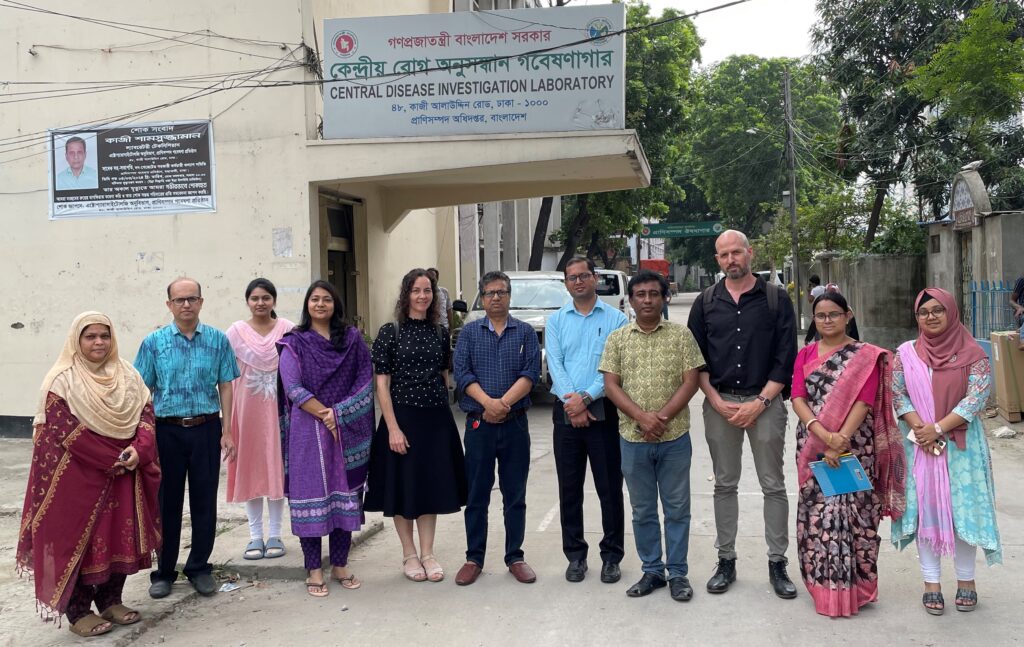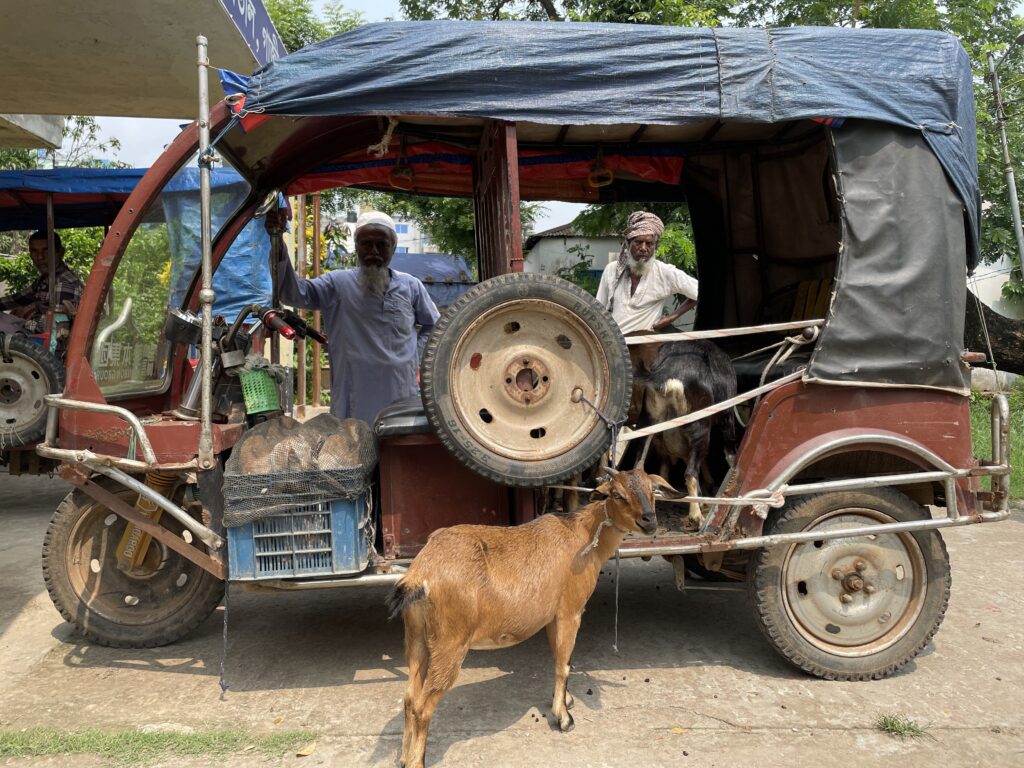In early June, Dr Kristina Osbjer and Dr Mads Martinus travelled to Bangladesh to learn about its antimicrobial resistance (AMR) landscape and interventions in food-producing animals. They met stakeholders from the animal sector and ministry officials and gained insights into poultry production and commitment to address antimicrobial use in broilers and local Sonali chicken..
Antimicrobial use (AMU) is high in broiler and Sonali production in Bangladesh. Recent research indicates that chickens receive antimicrobials for half of their lifespan, especially in small and medium-scale production. These factors lead to worrying rates of AMR in Bangladesh. Fortunately, there is a clear political and governmental commitment to AMR mitigation.

The AMR Landscape in Bangladesh and Mitigation Efforts
As part of their trip to Bangladesh, Dr Osbjer and Dr Martinus met with the Department of Livestock Services (DLS) and visited the Central Diseases Investigation Laboratory (CDIL) to explore available data and knowledge gaps on AMU and AMR in the country. Thanks to the well-equipped laboratory and research capacity, ICARS gained vast insights into the resistance rates of different antimicrobials used in poultry reared for meat and eggs, that feed the entire Bangladeshi population.

Next Steps
ICARS’ visit to Bangladesh provided an extensive layer of understanding of the AMR landscape in the country, including challenges and opportunities. The evident commitment from various stakeholders, from the government to research institutions and local farmers, to address AMR in animal production creates a solid base for further interventions.
ICARS looks forward to working more closely with the relevant stakeholders in Bangladesh to support their efforts in AMR mitigation. As a Low- and Middle-Income Country with a high vulnerability to the effects of climate change, Bangladesh also carries a significant AMR burden, notably affecting its food-producing animal sector and, in turn, exacerbating the spread of AMR.


